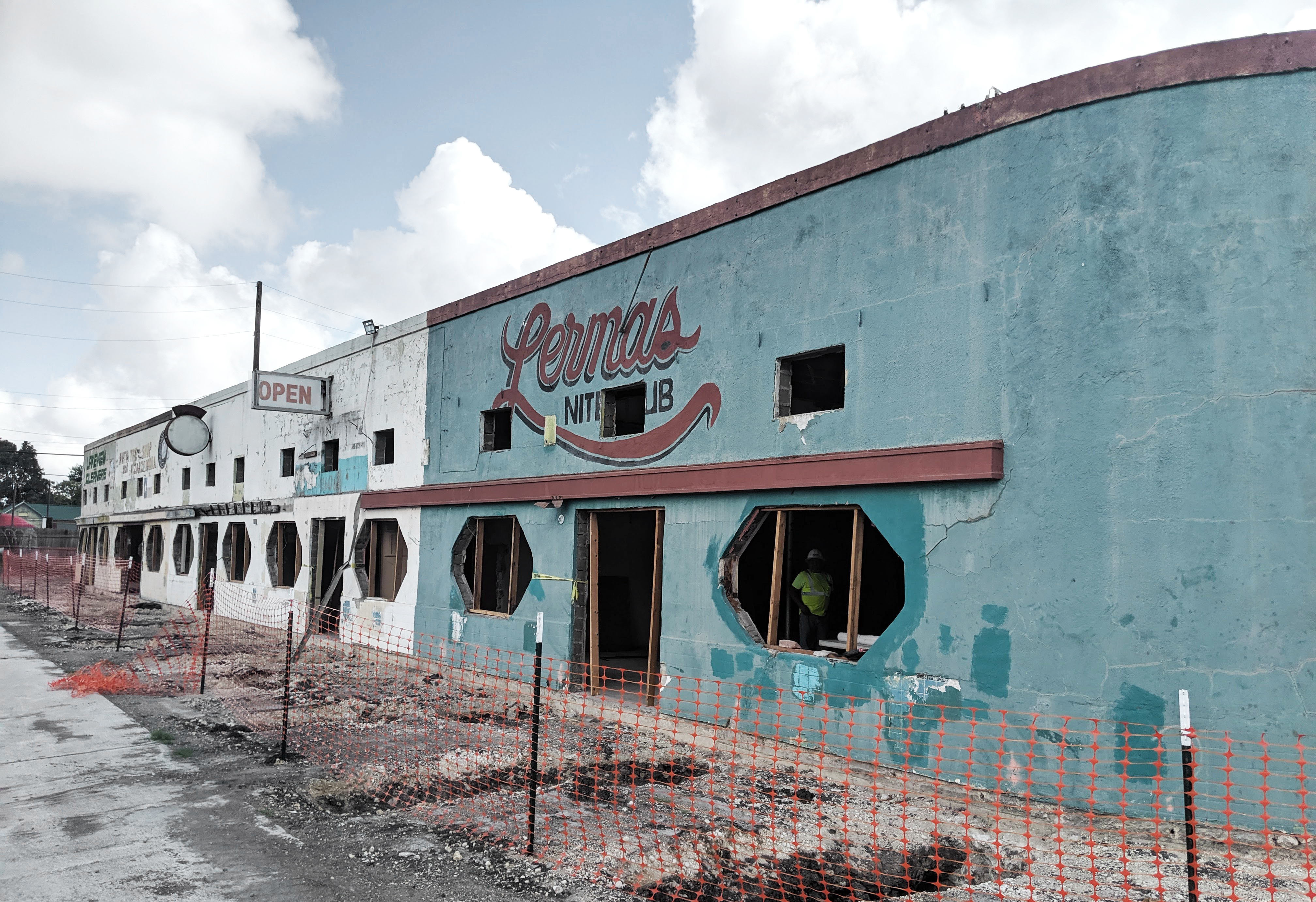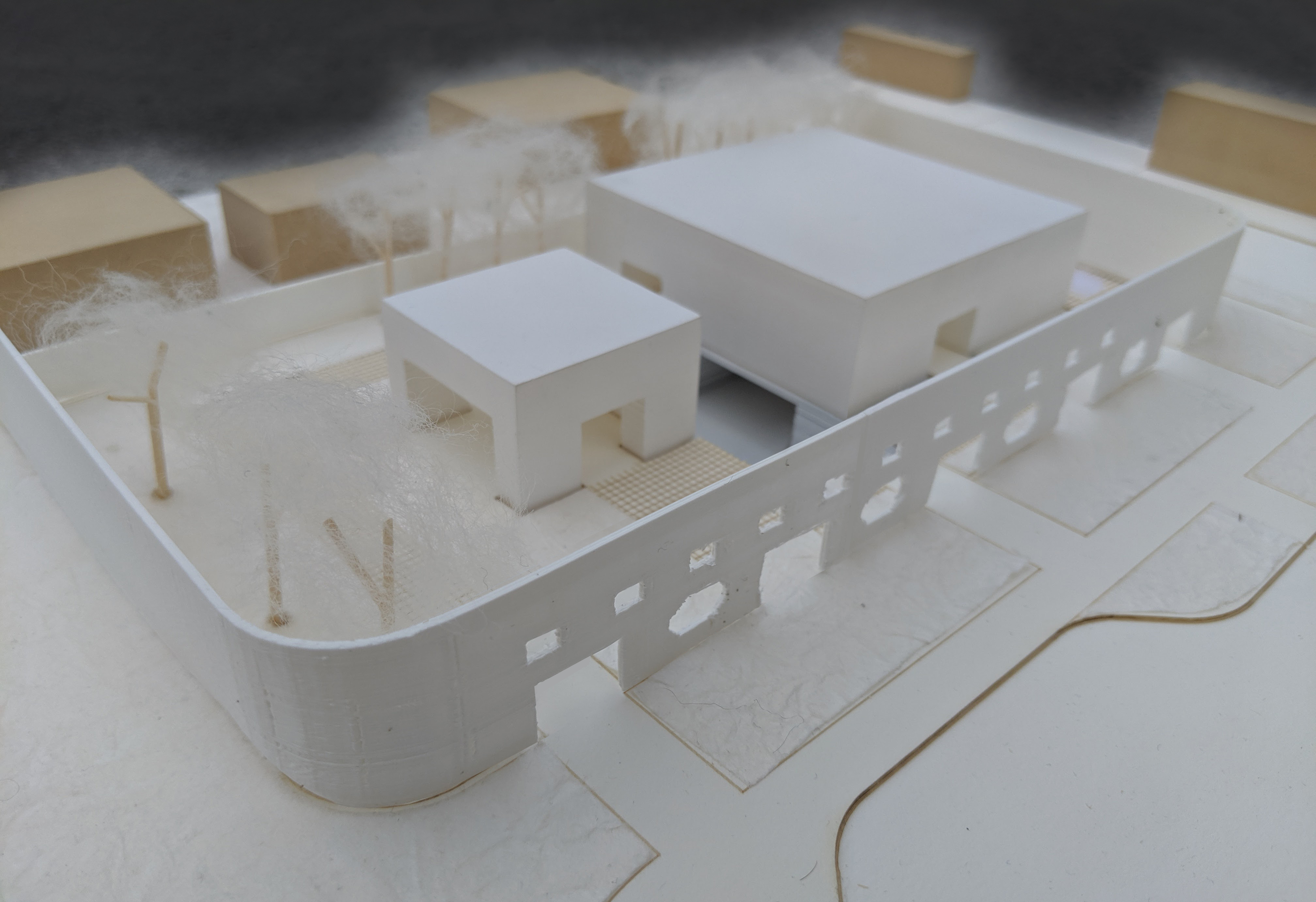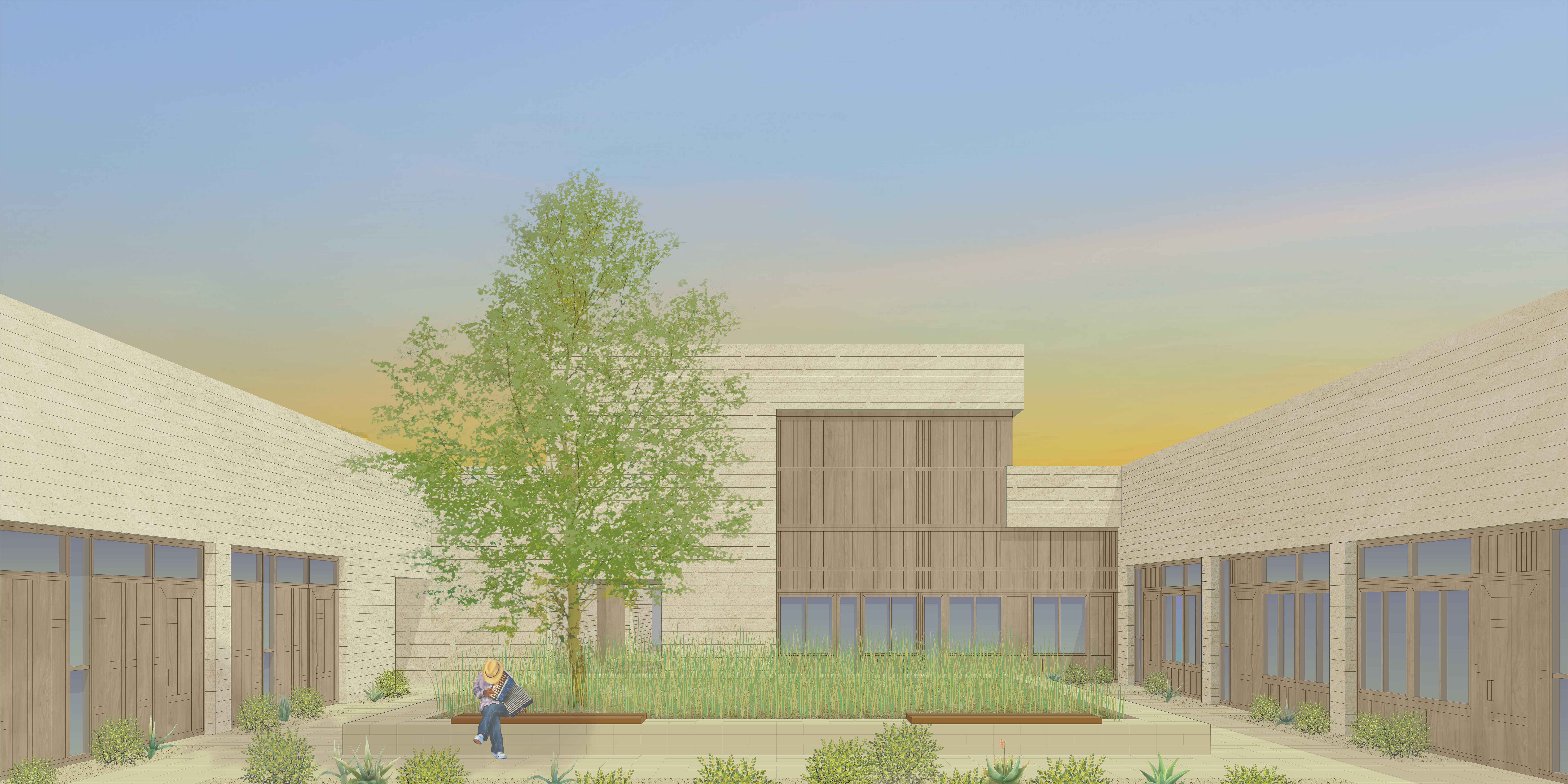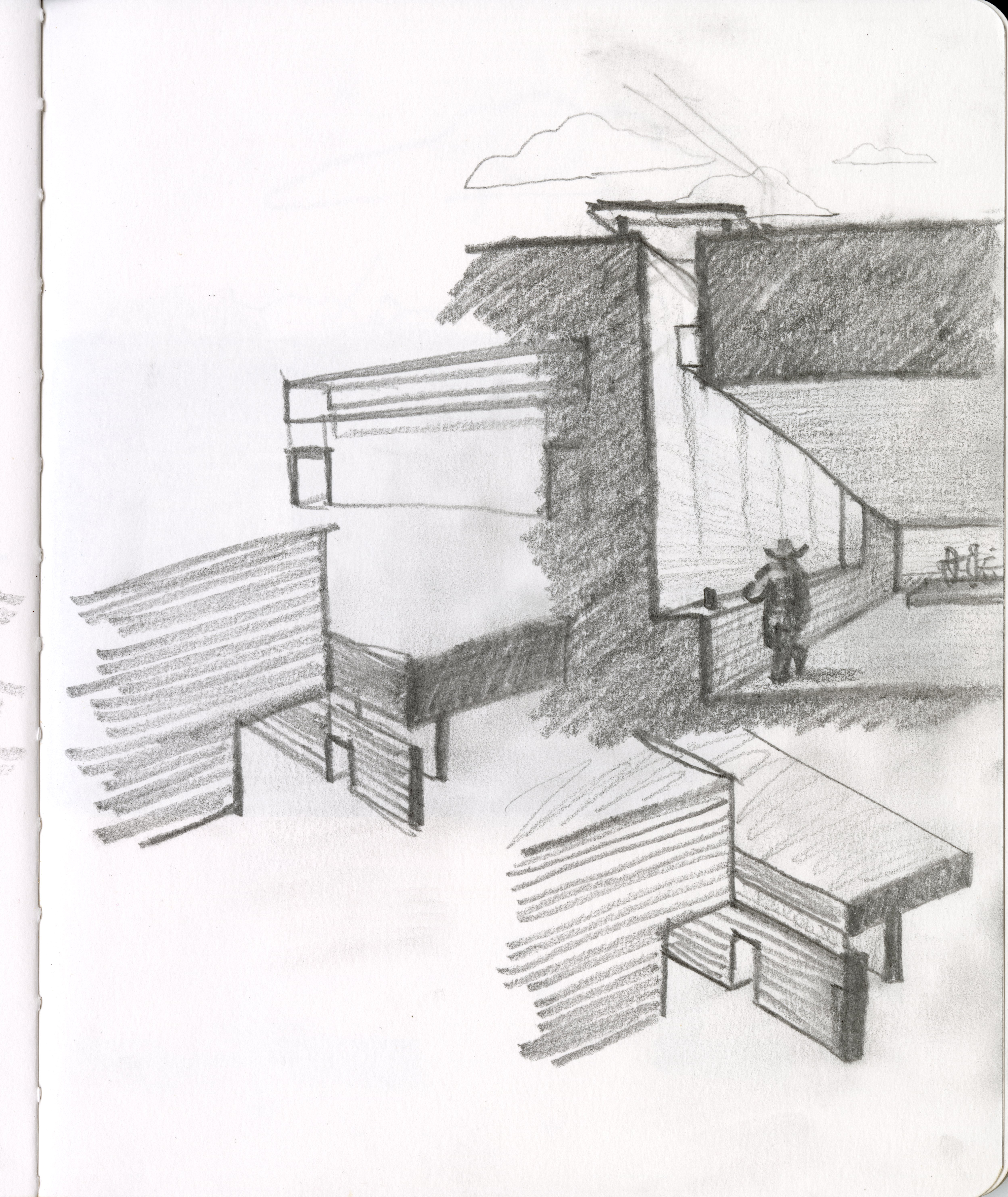Lerma’s
conjunto music and cultural center
In my beginning is my end. In succession
Houses rise and fall, crumble, are extended,
Are removed, destroyed, restored, or in their place
Is an open field, or a factory, or a by-pass.
Old stone to new building, old timber to new fires,
Old fires to ashes, and ashes to the earth
-T.S. Eliot, "East Coker," Four Quartets

A brief history of conjunto...
The pairing of two instruments, dissimilar in nearly every way, together perform as perfect complements. This unlikely joining of the bajo sexto and button accordion is the core defining characteristic of conjunto music. Meaning band in spanish, the history of conjunto is one of many kinds of banding together. Culturally, it was born from the fusion of Spanish, German, and Czech musical influences as ranch hands between San Antonio, Texas and Monterrey, Mexico came together throughout the nineteenth and twentieth centuries
.

The bajo sexto, a large six-stringed guitar pitched for lower bass parts, was developed around Monterrey during a time when the city served as a major center for European imports and cultural production. Meanwhile, a great number of German and Czech immigrants settled in Texas, bringing with them the accordion and polka rhythms.
In the ensuing cultural exchange, the bajo sexto took on the oompah baselines typical of polka music, and accordion players adopted the lively melodies of Spanish folk music. Vocalists tended to sing in pairs as well, often in parallel harmonies, adding depth and amplifying the sound of small groups of musicians.
All this took place as migrant workers passed back and forth regularly between Texas and Mexico. Unencumbered by large instruments and political divisions, this music helped forge an identity among a diverse and itinerant working class. Hard labor was rewarded in the evenings and on special occasions with the upbeat sounds and dancing that came to define conjunto.



Lerma’s story...
Open since 1951, Lerma’s Nite Club has been a hot spot for conjunto musicians and audiences, as well as a lifeline for the local Tejano community. Following years of economic decline and divestment across the West Side neighborhood, Lerma’s was condemned after it failed a building inspection and the owners could not afford the required remediation.
As a building, Lerma’s was lost. But as a space that brought together and telegraphed the presence of a vital community, it was too valuable to lose. This proposal suggests letting the building, or what remains of it, turn to ruin. Within and around the remaining wall, the ground will be shaped into compressed earth blocks (CEB). From these material remains, new sturctures will support future generations of conjunto musicians and West Side residents.


Picking up on the idea of complementary pairs, like the bajo sexto and the accordion, this projects seeks an architectural expression of a comparable strengenthing through partnership. One partner filling in where the other leaves off, and vice versa.
Adding spaces for complementary programming and repeating the massing of the Lerma’s buildling will reinforce the role it serves both culturally and urbanistically. With larger commerical buildings and a major thoroughfare to the north and smaller-scaled residential buildings in all other directions, flanking both sides of the street with matching medium-scaled buildings negotiates this urban transition with greater ease.
The result is an unlikely, yet complementary pair -
the ruin and its inversion.
The result is an unlikely, yet complementary pair -
the ruin and its inversion.

















Yale School of Architecture, fall 2019
critics: Tod Williams, Billie Tsien, Andrew Benner